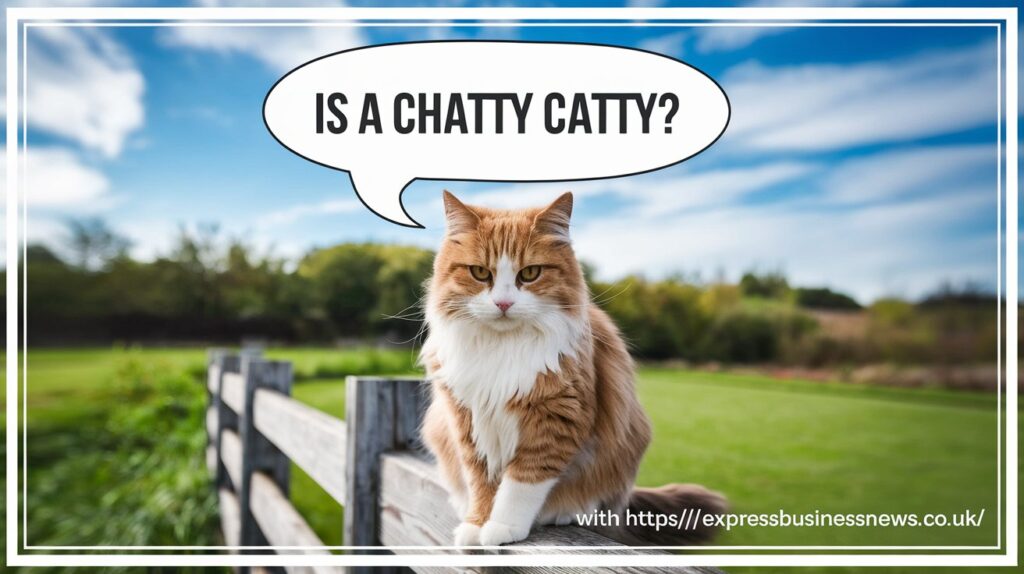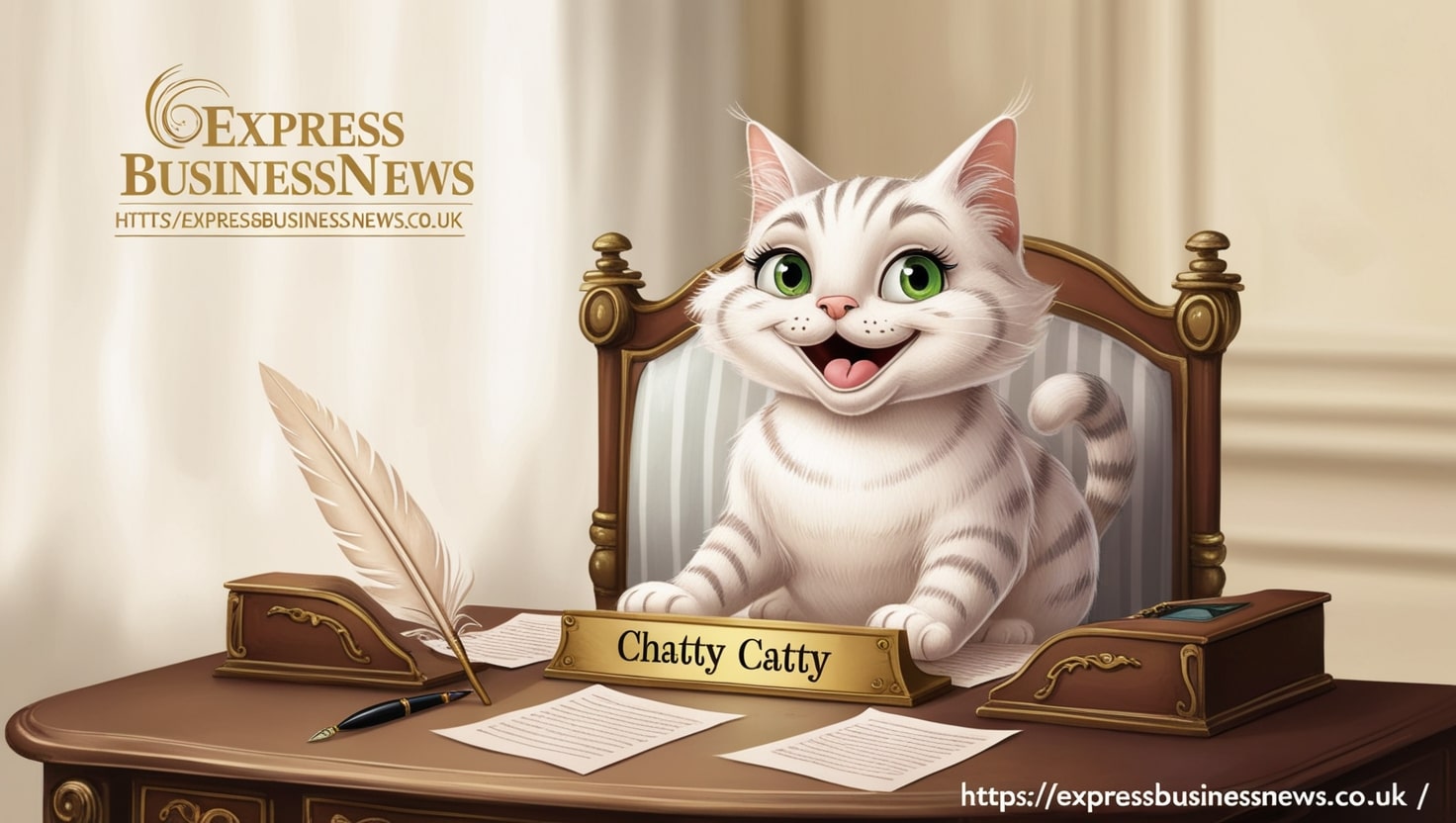Introduction to Chatty Cats
Is a Chatty Catty? Cats are known for their diverse vocalizations, from gentle purring to intense meowing. Among these vocal expressions, some cats stand out for their particularly chatty nature. Understanding why particular cats are more vocal than others can offer insights into their behavior, health, and relationship with their owners. This article explores the phenomenon of chatty cats, examining the factors contributing to their communicative tendencies.
The Nature of Cat Vocalizations
Is a Chatty Catty?. These sounds can include meows, purrs, hisses, and growls. Each type of vocalization serves a specific purpose, such as expressing contentment, signaling distress, or requesting attention. A chatty cat frequently meows or engages in vocal interactions with its human companions.
Factors Contributing to a Chatty Cat
Several factors can contribute to a cat’s chatty nature. These include genetics, personality, and environmental influences. Some cat breeds are more predisposed to being vocal, such as the Siamese, known for their distinctive and frequent meows. Additionally, a cat’s personality can significantly affect how often and how loudly they vocalize.

Genetic Influences on Vocalization
Is a Chatty Catty? Genetics can significantly influence a cat’s tendency to be chatty. Certain breeds are known for their vocal nature, a trait that has been selectively bred over generations. For example, the Siamese cat is famous for its vocalizations, often described as loud and persistent. Other breeds that tend to vocalize include the Oriental Shorthair and the Burmese.
The Role of Personality in Cat Communication
Beyond genetics, a cat’s personality can affect how chatty they are. Social and outgoing cats are more likely to vocalize frequently as they seek interaction and engagement from their human companions. On the other hand, more reserved cats may only vocalize occasionally or in response to specific stimuli.
Environmental Factors Influencing Vocalization
Is a Chatty Catty? Socialization, living conditions, and interactions with other pets can influence how often a cat vocalizes. For example, a cat that is used to receiving frequent attention from its owners may meow more often to maintain that level of interaction.
Health Issues and Excessive Vocalization
Excessive vocalization can sometimes indicate underlying health issues. Conditions such as hyperthyroidism, pain, or cognitive dysfunction can cause a cat to meow more than usual. Cat owners need to monitor changes in vocal behavior and consult with a veterinarian if they notice any signs of discomfort or illness.
The Importance of Attention and Interaction
Is a Chatty Catty? Chatty cats often seek attention and interaction from their human companions. Regular playtime, petting, and positive reinforcement can help satisfy a cat’s need for social engagement. Providing mental and physical stimulation can also reduce excessive vocalization by keeping a cat contented.
Understanding Your Cat’s Meows
Different types of meows can convey various messages. A short, quick meow might indicate a request for attention or food, while a longer, more drawn-out meow may signal discomfort or distress. Observing the context in which your cat vocalizes can help you interpret their needs and respond appropriately.
Training and Managing Chatty Behavior
Is a Chatty Catty? Training a chatty cat to reduce excessive vocalization involves addressing the underlying causes of their behavior. Consistent routines, providing enrichment, and avoiding reinforcement of demanding meows can help manage chatty tendencies. Positive reinforcement for quiet behavior can also encourage a cat to vocalize less frequently.
The Social Aspect of Cat Vocalization
Vocal communication is crucial in the social dynamics between cats and their human companions. Chatty cats often use their meows to strengthen bonds and engage with their owners. Understanding this social aspect can help owners better respond to their cat’s needs and preferences.
The Impact of Aging on Vocal Behavior
Is a Chatty Catty? As cats age, their vocal behavior can change. Older cats may become more vocal due to age-related changes such as hearing loss or cognitive decline. It is essential to consider these factors and provide appropriate care and support for senior cats exhibiting changes in vocalization.
Comparing Chatty Cats to Less Vocal Breeds
While some breeds are known for their vocal tendencies, others are naturally quieter. Comparing chatty breeds like the Siamese to quieter breeds like the British Shorthair can highlight the differences in vocal behavior. Understanding these differences can help prospective cat owners choose a breed that fits their lifestyle and preferences.

The Role of Socialization in Vocal Behavior
Early socialization can influence a cat’s tendency to be chatty. Cats well-socialized from a young age are more likely to develop confident vocal habits. Socializing kittens with various people and environments can help them grow into well-adjusted, communicative adults.
Analyzing Vocalization Patterns
Studying vocalization patterns can provide insights into a cat’s behavior and well-being. Regular monitoring of when and why a cat vocalizes can help identify patterns and triggers. This information can help address any issues related to excessive or disruptive vocalization.
The Effect of Human Response on Vocal Behavior
Is a Chatty Catty? How humans respond to a cat’s vocalizations can influence their behavior. Cats receiving attention or rewards for meowing may be more likely to continue vocalizing. Owners need to manage their responses and avoid reinforcing unwanted vocal behavior.
Understanding Breed-Specific Vocalization
Certain cat breeds are known for their unique vocalizations. For example, the Maine Coon is known for its chirps and trills, while the Abyssinian is known for its distinctive and varied vocal repertoire. Understanding these breed-specific traits can provide context for a cat’s vocal behavior.
The Relationship Between Vocalization and Play
Playtime can influence a cat’s vocal behavior. Cats engaged in interactive play may meow more often as part of their play interactions. Providing regular and stimulating play sessions can help manage vocal behavior and ensure a cat remains active and entertained.
The Role of Environmental Enrichment
Environmental enrichment can impact a cat’s vocalization. Providing toys, scratching posts, and climbing structures can reduce boredom and excessive vocalization. Enriching a cat’s environment helps address their instincts and needs, leading to a more balanced and content pet.
Addressing Behavioral Issues with Professional Help
Is a Chatty Catty? In some cases, chatty behavior may require professional intervention. Consulting with a veterinarian or animal behaviorist can help address underlying issues and develop a plan for managing excessive vocalization. Professional guidance can provide valuable insights and strategies for improving a cat’s behavior.
The Psychological Aspect of Vocalization
A cat’s psychological state can also influence vocalization. Stress, anxiety, and changes in routine can affect how often a cat meows. Addressing these psychological factors through a stable environment and stress-reduction techniques can help manage vocal behavior.
The Impact of Human Interaction on Vocalization
Is a Chatty Catty? Human interaction plays a significant role in a cat’s vocal behavior. Cats that receive regular and positive interactions from their owners are more likely to vocalize to maintain engagement. Building a strong bond with a cat through consistent interaction can contribute to balanced vocal behavior.
The Role of Routine in Managing Vocalization
Is a Chatty Catty? Establishing a consistent routine can help manage a cat’s vocal behavior. Regular feeding times, play sessions, and attention can create a sense of predictability for a cat. Routine provides structure and stability, helping reduce anxiety and excessive vocalization.
The Influence of Other Pets on Vocalization
The presence of other pets can impact a cat’s vocal behavior. Interactions with other animals, positive or negative, can influence how often a cat vocalizes. Managing multi-pet households involves meeting each pet’s needs and addressing any conflicts or stressors.
The Significance of Veterinary Check-Ups
Is a Chatty Catty? Regular veterinary check-ups are essential for monitoring a cat’s health and vocal behavior. Routine exams can help identify any underlying health issues contributing to excessive vocalization. Regular visits to the vet ensure a cat’s well-being and address potential concerns.
The Evolution of Cat Vocalization Research
Is a Chatty Catty? Research into cat vocalization continues to evolve, providing new insights into how and why cats communicate. Advances in technology and behavioral studies contribute to a better understanding of feline vocal behavior. Staying informed about research developments can help cat owners address vocalization issues more effectively.
The Cultural Perception of Chatty Cats
Is a Chatty Catty? Cultural perceptions of chatty cats vary around the world. In some cultures, vocal cats are seen as affectionate and engaging; in others, they may be viewed as disruptive. Understanding these cultural perspectives can provide additional context for interpreting a cat’s vocal behavior.
The Impact of Environmental Changes on Vocalization
Changes in a cat’s environment, such as moving to a new home or introducing new household members, can affect their vocal behavior. Cats may vocalize more in response to these changes as they adjust to new circumstances. Providing a stable and supportive environment helps ease transitions and manage vocal behavior.

The Benefits of Understanding Cat Communication
Is a Chatty Catty? Understanding cat communication, including vocalizations, is crucial for building a strong bond with a pet. By interpreting a cat’s meows and other sounds, owners can respond to their needs more effectively and ensure their well-being. Knowledge of feline communication enhances the overall human-animal relationship.
Conclusion: Embracing the Chatty Cat
Is a Chatty Catty? In conclusion, chatty cats are a fascinating aspect of feline behavior, with various factors contributing to their vocal tendencies. Understanding the reasons behind a cat’s chatty nature helps owners provide better care and manage their pet’s behavior. Whether due to genetics, personality, or environmental influences, embracing a chatty cat involves recognizing and responding to their unique communication style.




